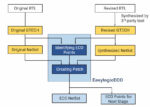You are currently viewing SemiWiki as a guest which gives you limited access to the site. To view blog comments and experience other SemiWiki features you must be a registered member. Registration is fast, simple, and absolutely free so please,
join our community today!
Traditional RTL low power design techniques such as sequential clock gating are widely deployed across the industry. Yet, even after multiple RTL revisions, residual power inefficiencies often remain undetected until silicon, resulting in missed optimization opportunities.
This seminar presents a refined approach to
…
Read More
As digital chip design complexity grows, engineering teams face increasing pressure to meet aggressive PPA targets on tight schedules. To overcome this challenge, the EDA industry requires a revolutionary shift towards AI. Siemens EDA is leading this transformation by implementing a comprehensive strategy that combines… Read More
The rapid evolution of artificial intelligence (AI) is transforming industries, from autonomous vehicles to data centers, demanding unprecedented computational power and efficiency. As highlighted in Synopsys’ guide, the global AI chip market is projected to reach $383 billion by 2032, growing at a 38% CAGR. This … Read More
Hardware designers have been using RTL and hardware description languages since the 1980s, yet many attempts at moving beyond RTL have tried to gain a foothold. At the #62DAC event I spent some time with Mike Fingeroff, the Chief High-Level Synthesis Technologist to understand what his company Rise Design Automation is up to. … Read More
Modern SoCs can be complex with hundreds to thousands of IP blocks, so there’s an increasing need to have a front-end build and assembly methodology in place, eliminating manual steps and error-prone approaches. I’ve been writing about an EDA company that focuses on this area for design automation, Defacto Technologies, and … Read More
In the early days an IC had a single clock and a single reset signal, making it a simple matter to reset the chip into a known, stable state, so there was little need for detailed analysis. For modern designs there can be dozens to hundreds of clocks, creating separate domains and some use of asynchronous resets, so the challenge of ensuring… Read More
I first visited Easy-Logic at DAC in 2023, so it was time to meet them again at #61DAC in San Francisco to find out what’s new this year. Steven Chen, VP Sales for North America and Asia met with me in their booth for an update briefing. Steven has been with Easy-Logic for six years now and earned an MBA from Baruch College in New York. This… Read More
At #61DAC I stopped by the Defacto Technologies exhibit and talked with Chouki Aktouf, President and CEO, to find out what’s new in 2024. ARM and Defacto have a joint SoC design flow by using the Arm IP Explorer tool along with Defacto’s SoC compiler, which helps to quickly create your top-level RTL, IP-XACT and UPF files. This tool… Read More
I stopped by the AMIQ EDA booth at DAC to get an update from Tom Anderson about their Integrated Development Environment (IDE), aimed at helping design and verification engineers save time. In my early IC design days we used either vi or emacs and were happy with having a somewhat smart text editor. With an IDE you get a whole new way … Read More
As SoC complexities continue to expand to billions of transistors, the quest for higher levels of design automation also rises. This has led to the adoption of High-Level Synthesis (HLS), using design languages such as C++ and SystemC, which is more productive than traditional RTL design entry methods. In the RTL approach there… Read More








